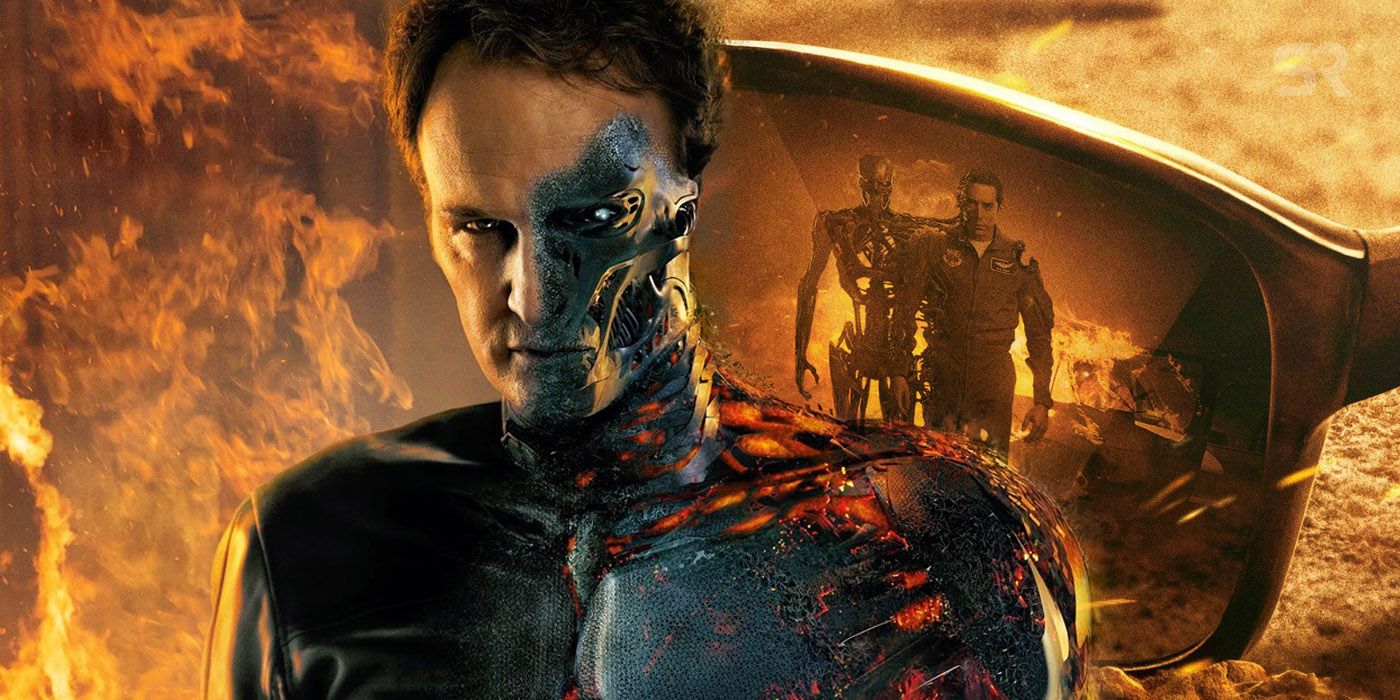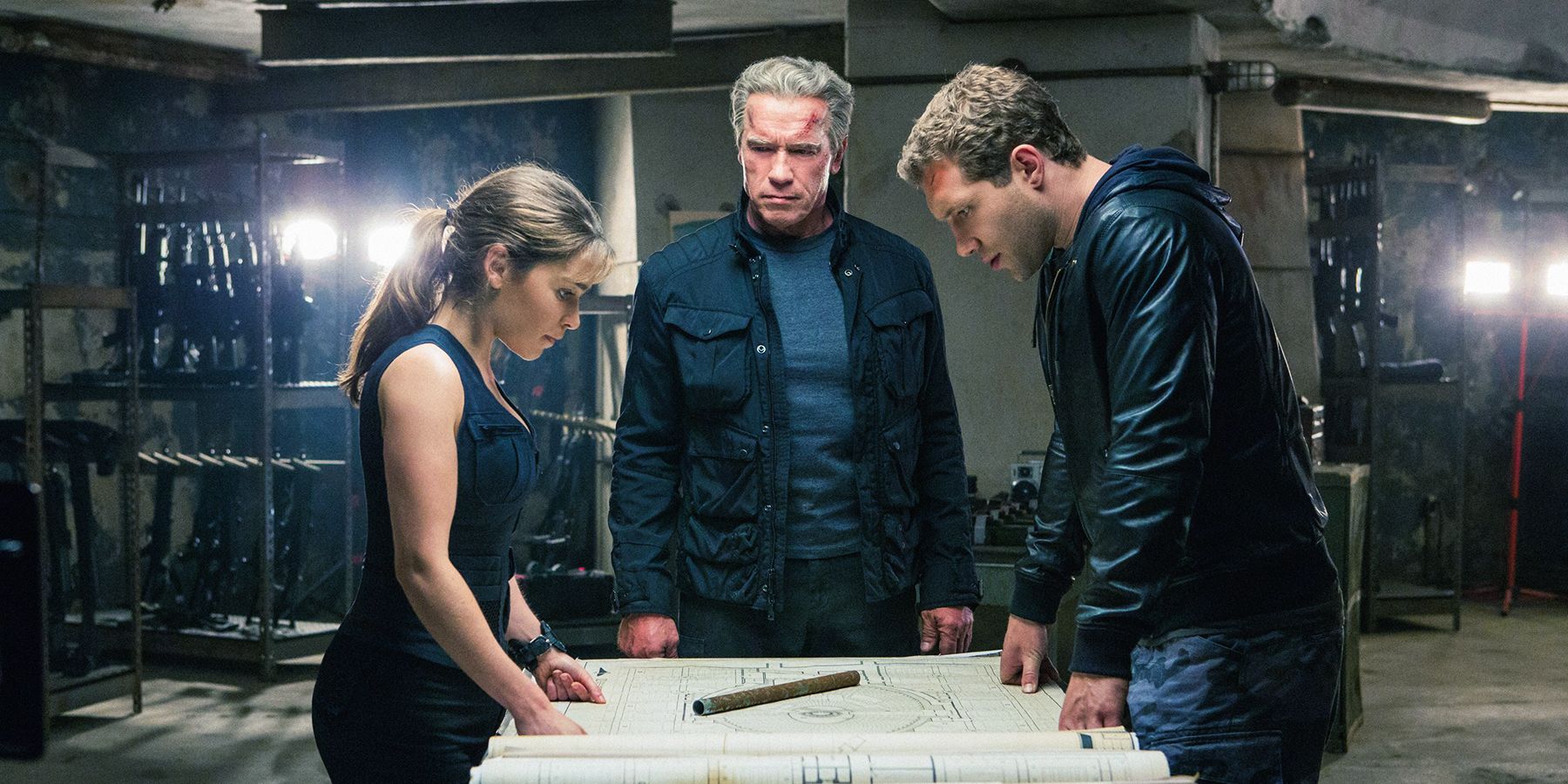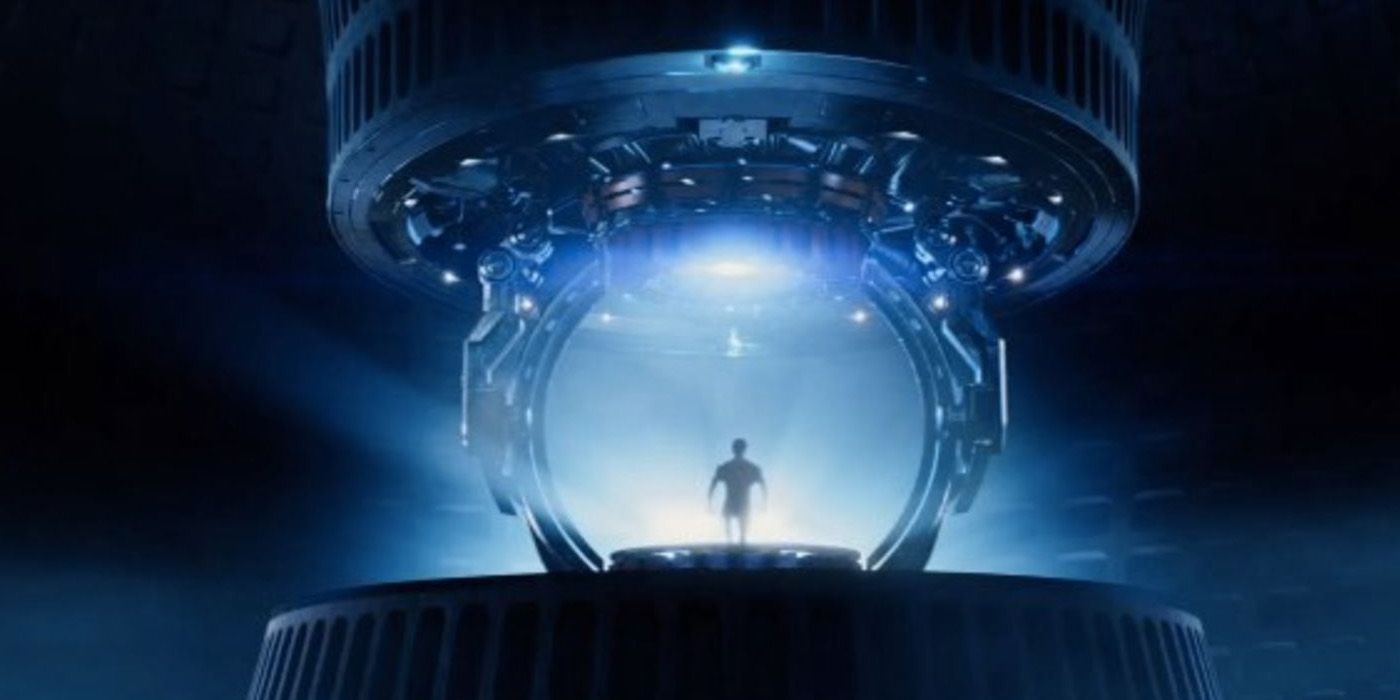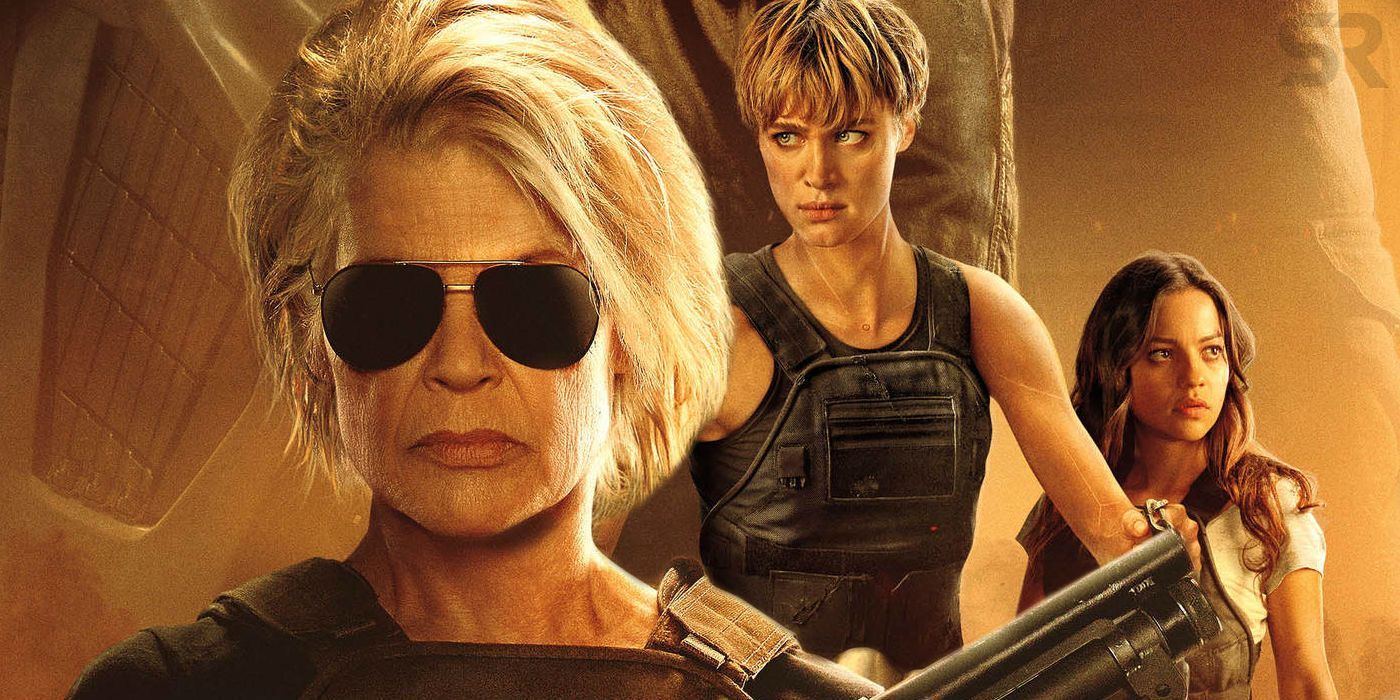Terminator 6 was originally going to be a direct sequel to Terminator Genisys, and the storyline would have been very different from what audiences saw in last year's Terminator: Dark Fate. The Terminator franchise has been struggling to find its footing ever since the high point that was James Cameron's Terminator 2: Judgment Day. Terminator 3: Rise of the Machines and Terminator: Salvation were both box office disappointments, so Terminator Genisys was intended to be a fresh start for the series.
Bringing back Arnold Schwarzenegger after he chose not to be involved in Salvation (the T-800 was recreated using CGI and a body double for that movie), Terminator Genisys was a soft reboot set in an alternate timeline. This time around, the T-800 was sent back in time to protect Sarah Connor as a little girl (a plot element designed to explain Schwarzenegger's advanced age), Skynet was rebranded as a global operating system called Genisys, and John Connor was transformed into a human-machine hybrid.
Terminator Genisys was not the salvation that Paramount Pictures had hoped for, but despite its convoluted time travel plot and reliance on retreading previous movies, it did have some interesting new elements. Had things gone differently, it would have led into a very different take on Terminator 6.
Terminator Genisys Was Supposed To Start A New Trilogy
Terminator Genisys was co-produced by Skydance, which was also working on another rebooted franchise set in an alternate timeline, producing Star Trek Into Darkness and Star Trek Beyond for Paramount. Genisys was intended to kick off its own new trilogy with a similar approach of a timeline reboot featuring new actors in the roles of familiar characters, like Kyle Reese (played by Jai Courtney this time around) and Sarah Connor (played by Emilia Clarke). It would appeal to franchise newcomers while also having enough throwbacks (and an older actor back in their most iconic role) to keep longtime fans interested. The original plan was for Terminator Genisys to kick off not only a movie trilogy, but a spinoff TV show as well. In fact, there were already plot outlines in place for the two movie sequels while Genisys was in production.
What Terminator Genisys 2 Would Have Been About
At the end of Terminator Genisys, our heroes have successfully stopped the rise of Skynet/Genisys. Sarah, Kyle, and "Pops" (the latest version of the T-800) are last seen riding off into the sunset, with Pops now boasting T-1000-style shapeshifting technology. So, with the future apparently saved, what would have happened next?
One of the things that the Terminator Genisys sequels would have cleared up was the origin of Matt Smith's T-5000 unit, who disguised himself as a human called Alex. The physical embodiment of Skynet, the T-5000 only had a very small role in Terminator Genisys, infiltrating John Connor's Tech-Com unit and infecting humanity's savior with machine nanobots to turn him into a T-3000. Though it wasn't made clear in Genisys, screenwriter Laeta Kalogridis told io9 that the sequels would have confirmed that the T-5000 is Skynet from an alternate timeline. This suggests that not only would Terminator 6 had given Smith's character a larger role, but that it would have also expanded the scope of the franchise into multiverse territory.
Terminator Genisys' sequels would also have resolved another lingering question from the movie: who sent the T-800 back to protect Sarah Connor as a child. Also speaking to io9, co-writer Patrick Lussier teased that "[Arnold’s T-800] is building time travel from plans someone else made," and said that later sequels would reveal not only his origins, but the origins of the T-1000 that killed Sarah's parents.
Given how many times Schwarzenegger's character has died in the series, it should come as no surprise that we hadn't seen the last of Jason Clarke's cyborg John Connor. Reflecting on the planned sequel in a 2018 interview with Collider, Clarke said, "What I remember was that second one was going to be about John’s journey after he was taken by Skynet… like going down to what he became; half machine, half man. That’s where the second one was going to start, and that’s about all I knew." It's possible that John might have somehow survived the explosion in the same way that Pops did, or that Terminator 6 could have featured a John Connor from an alternate timeline who was also turned into a man-machine hybrid.
Why Terminator Genisys 2 Didn't Happen
In short, Terminator Genisys was not quite the successful franchise reboot that Paramount wanted. It roughly broke even at the box office with a worldwide gross of $440 million. While not a total financial disaster, it would have needed a solid profit margin in order to justify a direct sequel. The bad reviews were also a factor, with both critics and fans calling out the movie's time travel machinations as confusing and difficult to follow. Based on what we know about the planned story for Terminator Genisys 2, the sequel would have only doubled down on the confusion by adding alternate timelines into the mix. Instead, the decision was made to wipe the slate clean and go back to the last time the Terminator franchise was indisputably great.
Terminator: Dark Fate Begins Another Story (& Disregards Genisys)
Disregarding the events of Terminator 3: Rise of the Machines, Terminator: Salvation and Terminator Genisys, Terminator: Dark Fate was billed as a return to the franchise's roots. The big selling point was the return of James Cameron in a producer role, with Tim Miller (Deadpool) directing the latest attempt to fix the Terminator franchise. Speaking to Deadline, Cameron explained how he was approached to breathe life back into the Terminator movies:
"[Skydance SEO David Ellison] has always believed in the potential of Terminator, but he really felt that his own film, Genisys — and he was quite honest with me about this — fell short of the mark and didn’t really do what he had wanted it to do. So he said, ‘Let’s start with a blank slate and take it back to Terminator 2.’ And that idea was intriguing."
Dark Fate picks up from the end of Terminator 2: Judgment Day, even bringing back Edward Furlong's young John Connor with the help of CGI. One idea that did carry over from the Terminator Genisys sequel was having a human-machine hybrid character; Mackenzie Davis' future warrior Grace is augmented with cybernetic parts that give her super-strength and reflexes, making her more of a match for the machines. However, Dark Fate limited its time-hopping and avoided the potential mess of alternate universes altogether, instead opting for more of a retread of the first two Terminator movies: a murderous robot is sent back in time to kill an important figure, and the human resistance sends someone back to protect that same person.
So, did Terminator: Dark Fate do a better job of rebooting the franchise than Terminator Genisys? Yes and no. It certainly received more favorable reviews than Genisys, but unfortunately proved to be a major box office flop, with an estimated loss of $120 million for Paramount. Box office is ultimately what decides the future of a franchise, and Terminator: Dark Fate's sequel prospects look even worse than Genisys' did. When Terminator 7 eventually happens, we can probably look forward to yet another reboot.




